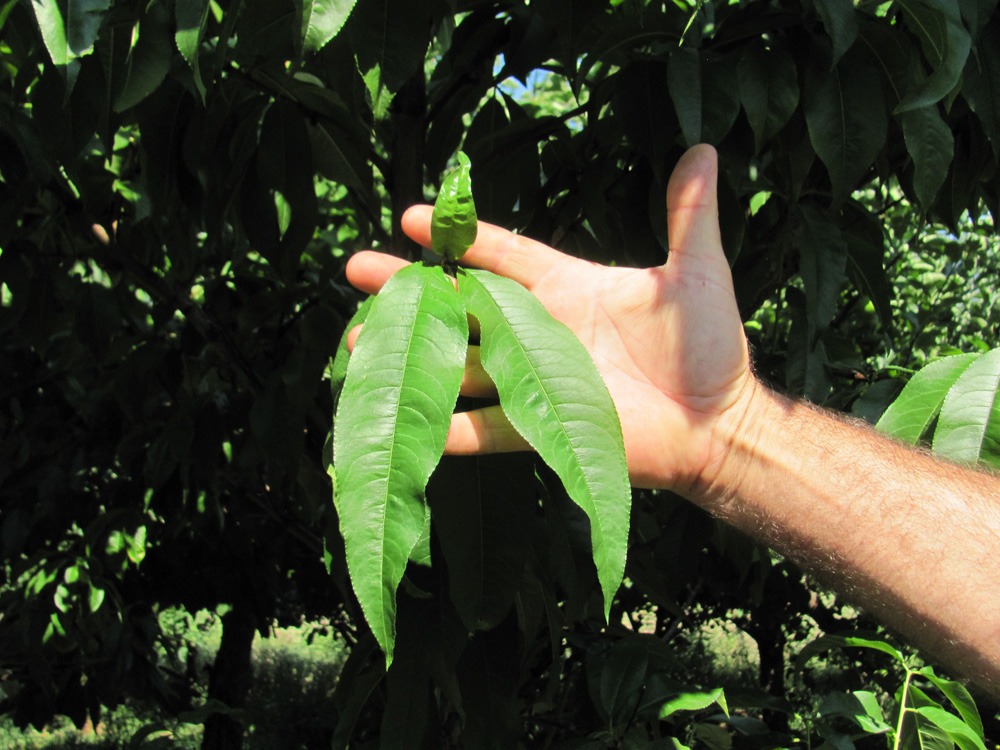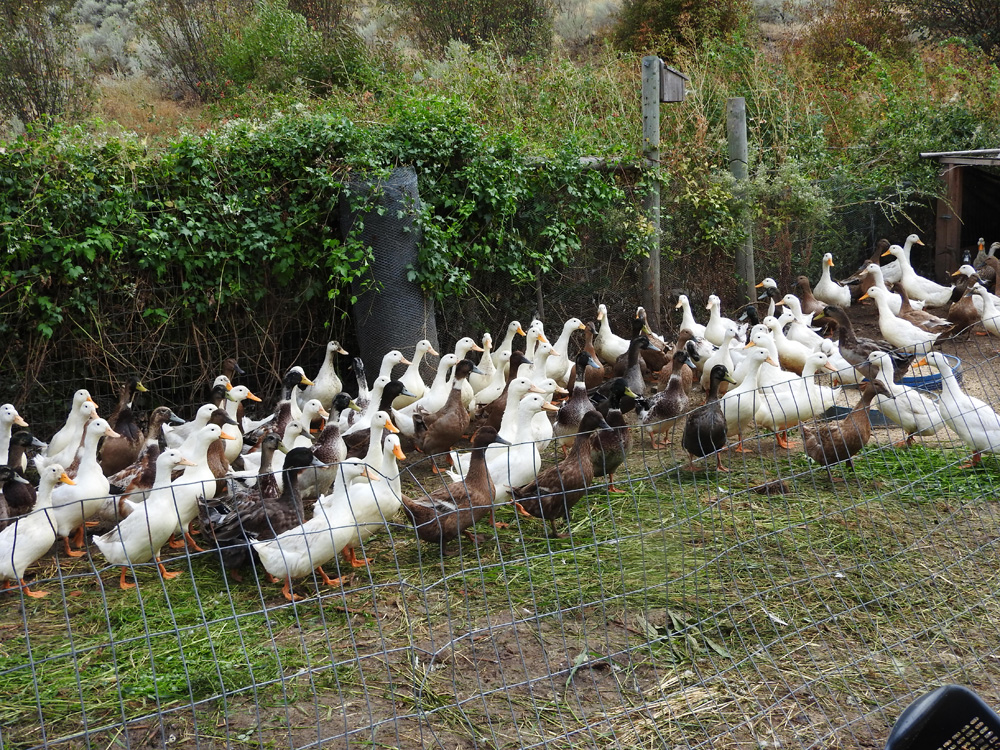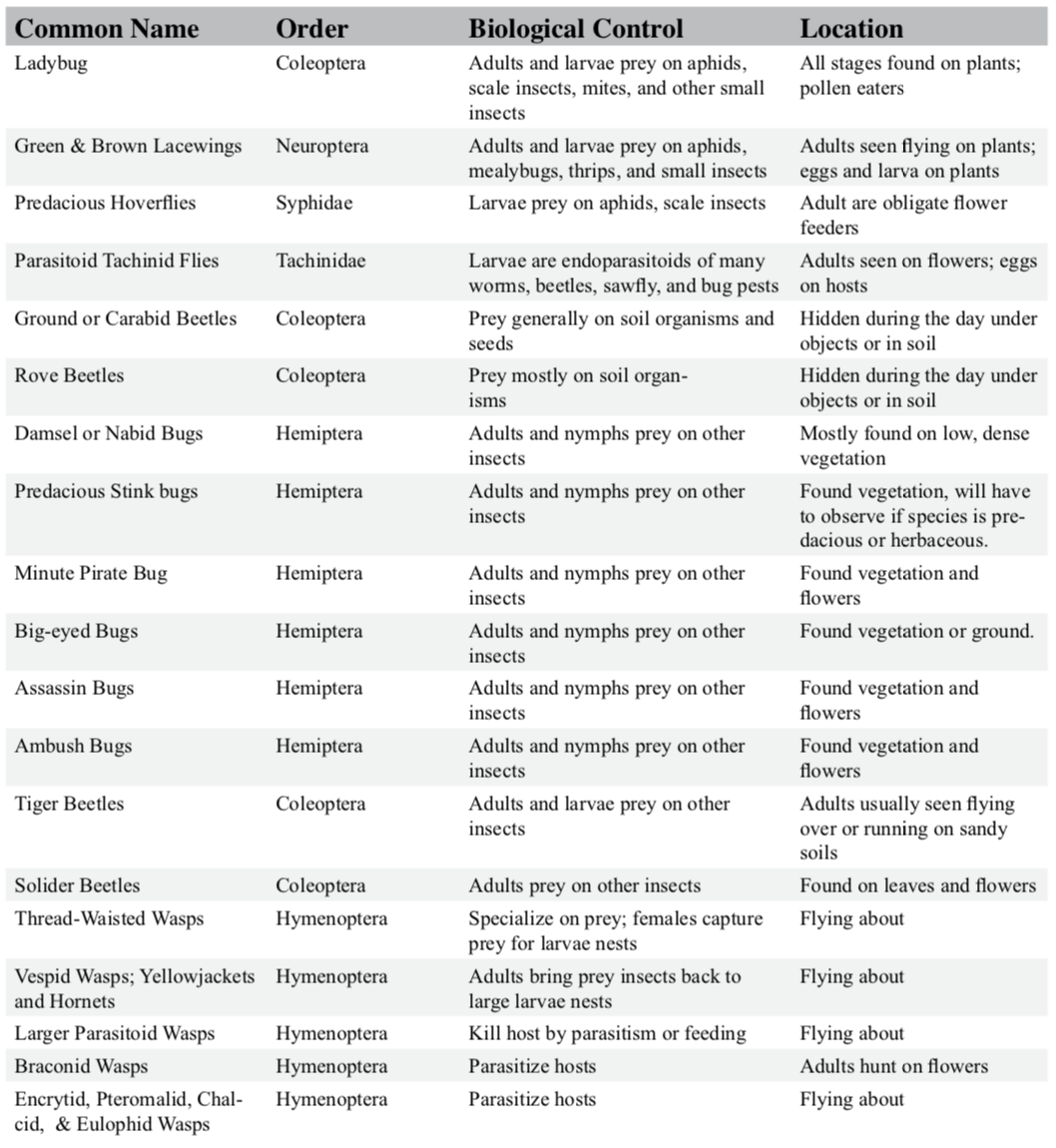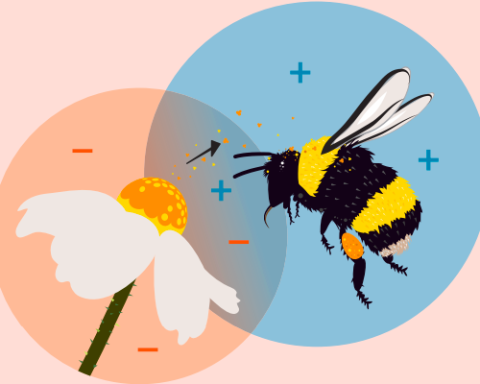An Ecological Partnership in Biological Control
Marjorie Harris, BSC, P.Ag.
During winter hikes several hundred meters above the valley floor up to the rocky faced peak of Snowy Mountain, Walter has observed the Ladybugs crowded into crevices by the hundreds, “It’s a really remarkably beautiful sight,” Walter says, speaking in tones of wonder when considering the complexity of nature. Through biodynamic practices Walter is careful not to interrupt the beneficial organisms’ ecologically balanced systems at work in the orchard and makes efforts to support their natural life cycles.

Grasshoppers sometimes nip overripe fruit and live mostly on the ground in the grass. Physical control methods are frequent mowing, occasional rototilling, and cover crop rotation. However, Walter reports that the orchard hosts a huge population of Praying Mantis who do much of the grasshopper control. The Ground Mantis is the only species native to the Okanagan Valley while the European Mantis was introduced to in the 1890s specifically to control grasshoppers. Both species are present in the South Okanagan. Walter is careful to respect and not disturb the papery egg cases hardened to stems, twigs, trees, or posts, each of which contains hundreds of eggs.
Predacious wasps control leaf roller larva, coddling moth, and nematodes. The Mud Wasp domain is in the grasses and the Yellow Jacket Wasps control the tree canopies. Walter has installed 150 Wren houses around the orchard that are filled yearly. The Wrens are insectivores that provide additional control for leaf rollers and aphids throughout the season.
Nematodes are further controlled by disrupting the soil stage of their lifecycle. In the orchard drive row, Walter rotates cover crops of rye, clover, vetch, and oats to prevent catastrophic nematode populations from emerging. A large flock of free range ducks are run through the orchard after harvest is complete; they eat insect larva, eggs, and nematodes before the winter freeze.
Walter finds that most years his insect allies outnumber his insect pests and his experience echoes that of ancient farmers. Natural enemies were first recorded to be actively employed as biological controls in plant protection in China in 304 AD where large black predacious ants were gathered up and carried to citrus trees to control tree pests. The historical evidence is clear that biological controls have played an important role in plant protection since ancient times and the knowledge and use of these farming tools spread to Yemen and Egypt relatively quickly.
The main groupings of biological controls are: predators, parasitoids, and pathogens. Predatory insects eat pest insects; parasitic insects lay their eggs inside pests and the larvae develop within the host, killing it; and pathogens such as fungi or bacteria consume the pests.

How can these biological controls be encouraged to move into your garden?
First is food: many predatory insects dine on pollen when insect pests are in short supply. Keep a healthy supply of some of these favorite pollen rich producers growing in abundance: Angelica, Calendula, Caraway, Chives, Cilantro, Coreopsis, Cosmos, Dandelions, Dill, Fennel, Feverfew, Marigold, Scented Geraniums, Sweet Alyssum, Tansy, and Yarrow.
Second is water: provide water features throughout the garden containing fresh non-stagnant water.
Third is shelter: Vegetated buffers or clumps of natural flora and fauna that give thick cover provide good homes to beetles, birds, and amphibians.
Fourth is respect to lifecycle: know where the eggs for next year’s progeny will be and carefully sustain them. Protect beneficials from management disturbances, pesticides, and adverse environmental conditions as much as possible.
Table 1: Common Natural Enemies of Crop and Garden Pests of the Pacific Northwest

Marjorie Harris, BSC, P.Ag. IOIA V.O.; EcoAudit Ag-Grow Service; Email: ecoaudit@telus.net
Photo credit: Marjorie Harris







